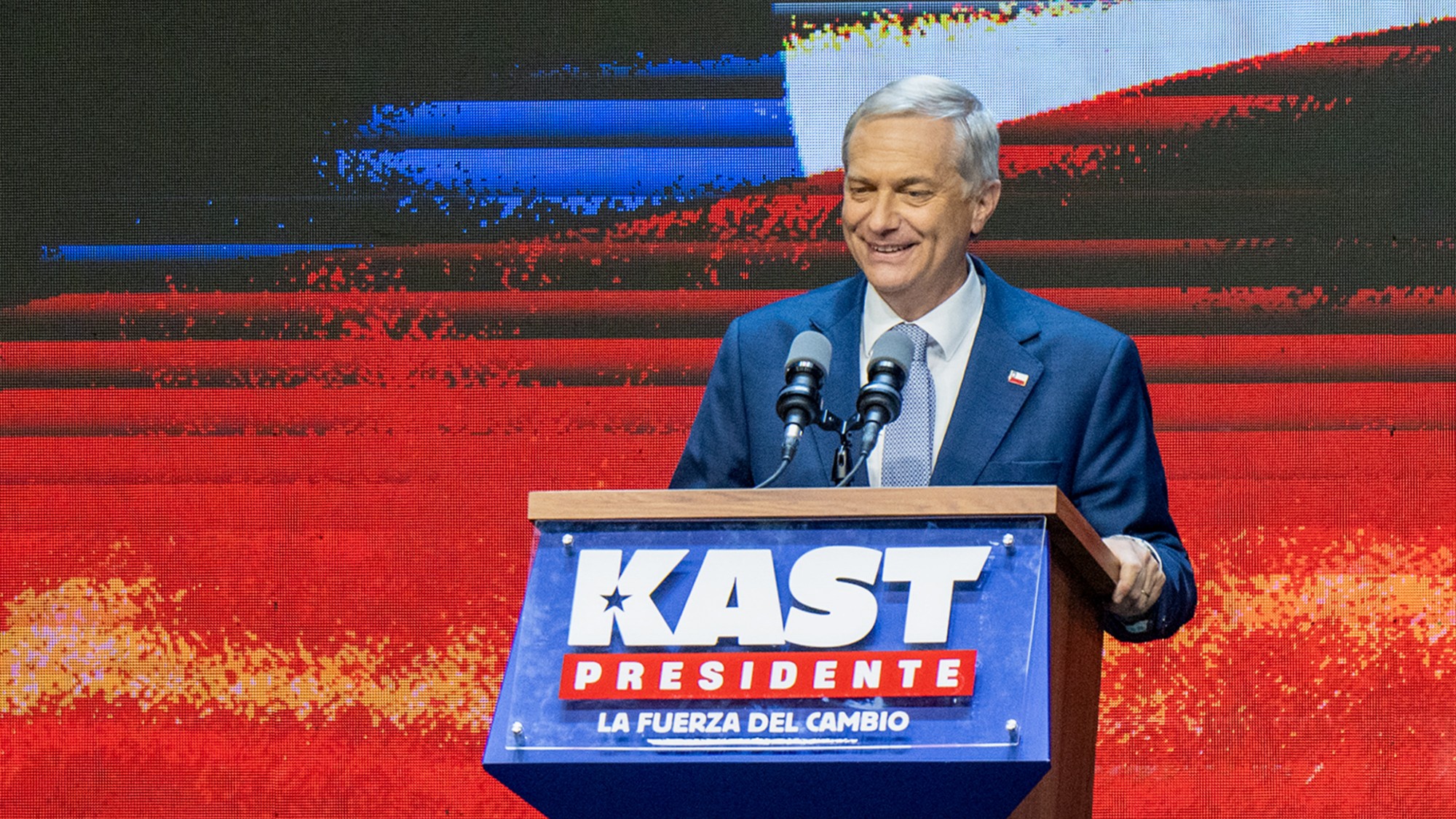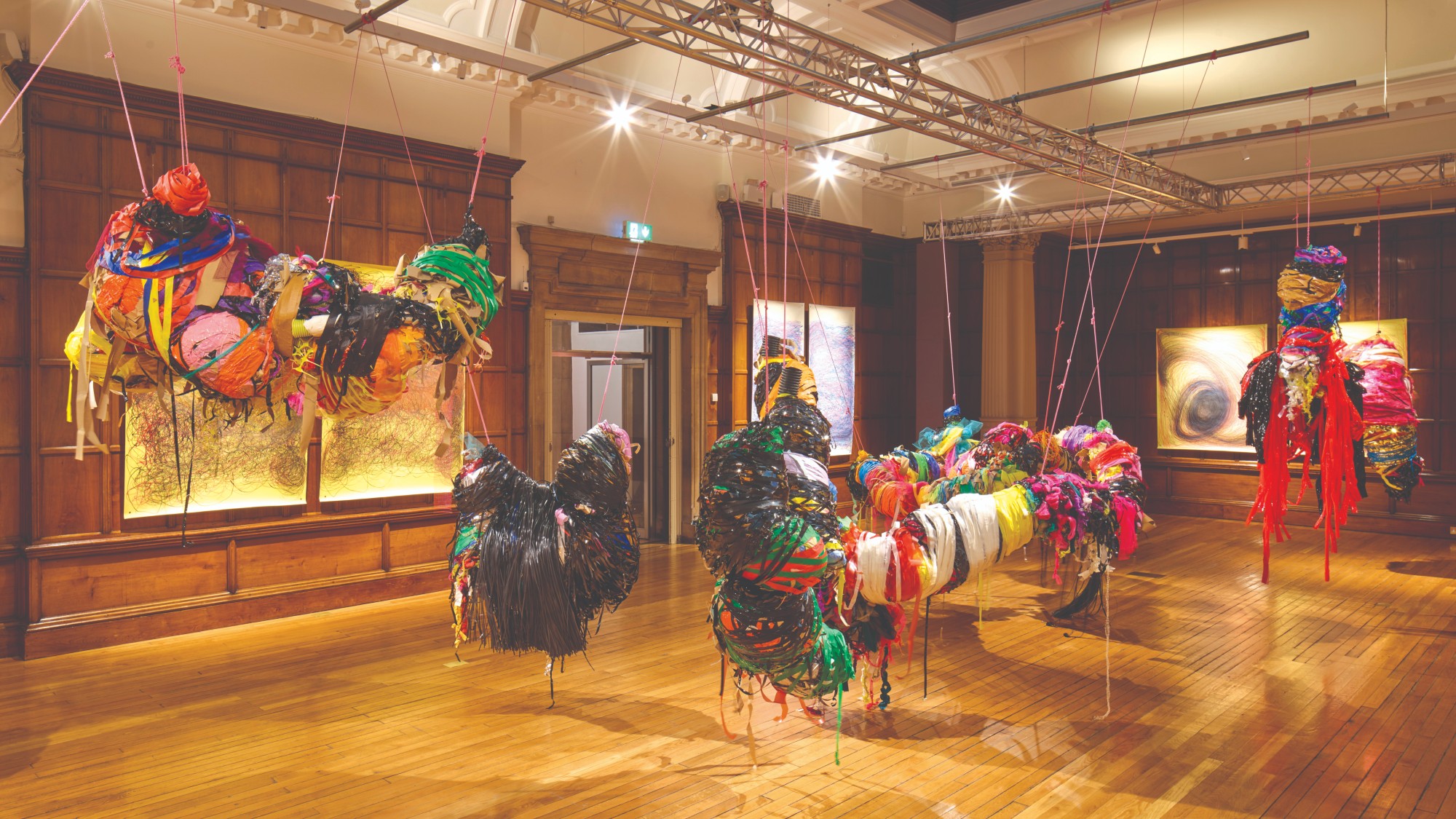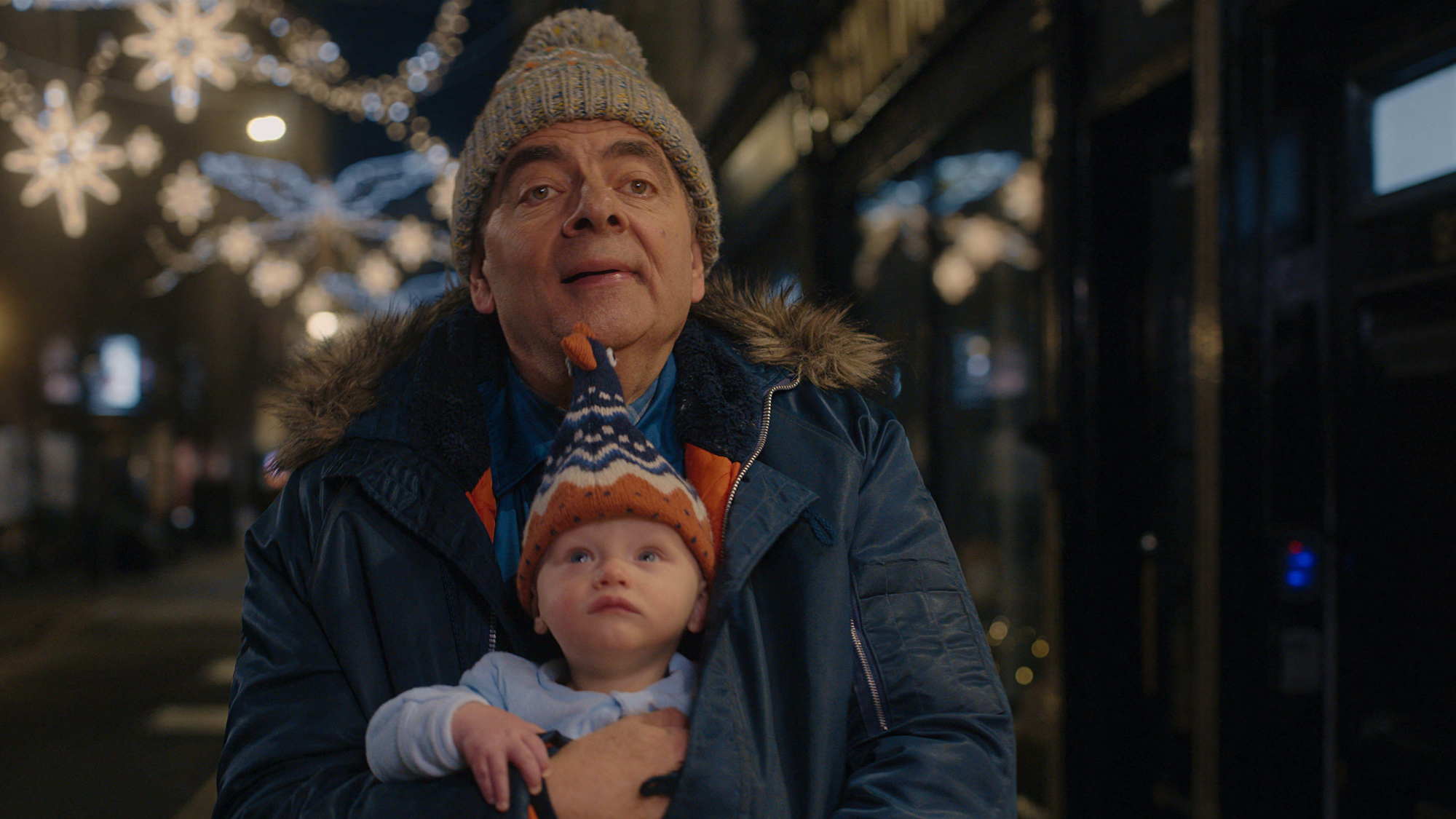The last word: The urge to merge
The average American spends hundreds of hours every year out on the roads. But the choices we make, says author Tom Vanderbilt, prove how little we know about driving.
Why does the other lane always seem to be moving faster?
It is a question you have no doubt asked yourself while crawling down some choked highway, watching with mounting frustration as the adjacent cars glide ahead. You drum the wheel with your fingers. You change the radio station. You fixate on one car as a benchmark of your own lack of progress. You try to figure out what that weird button next to the rear window defroster actually does.
I used to think this was just part of the natural randomness of the highway. Sometimes fate would steer me into the faster lane, sometimes it would relinquish me to the slow lane.
The Week
Escape your echo chamber. Get the facts behind the news, plus analysis from multiple perspectives.

Sign up for The Week's Free Newsletters
From our morning news briefing to a weekly Good News Newsletter, get the best of The Week delivered directly to your inbox.
From our morning news briefing to a weekly Good News Newsletter, get the best of The Week delivered directly to your inbox.
That was until recently, when I had an experience that made me rethink my traditionally passive outlook on the road, and upset the careful set of assumptions that had always guided my behavior in traffic.
I made a major lifestyle change. I became a late merger.
My epiphany came on a northern New Jersey highway. I was having a typical white-knuckle drive among the scenic oil-storage depots and chemical-processing plants when suddenly, on the approach to the Pulaski Skyway, the sign loomed: LANE ENDS ONE MILE. MERGE RIGHT.
Seized by some rash impulse, I avoided the tickle at the back of my brain telling me to get in the already crowded right lane. Just do what the sign says, that voice usually counsels. Instead, I listened to another, more insistent voice: Don’t be a sucker. You can do better. I plowed purposefully ahead, oblivious to the hostile stares of other drivers. From the corner of my eye I could see my wife cringing. After passing dozens of cars, I made it to the bottleneck point, where, filled with newfound swagger, I took my rightful turn in the small alternating “zipper” merge that had formed. I merged, and it was clear asphalt ahead. My heart was beating faster. My wife covered her face with her hands.
A free daily email with the biggest news stories of the day – and the best features from TheWeek.com
In the days after, a creeping guilt and confusion took hold. Was I wrong to have done this? Or had I been doing it wrong all my life? Looking for an answer, I posted an anonymous inquiry on Ask MetaFilter, a website one can visit to ask random questions and tap into the “hive mind” of an anonymous audience of overeducated and overopinionated geeks. Why are people rewarded for merging at the last possible moment, I wanted to know. And was my new lifestyle, that of the late merger, somehow deviant?
I was startled by the torrent of responses. What struck me most was the passion with which people argued their various cases—and the fact that while many people seemed to think I was wrong, almost as many seemed to think I was right.
The first camp viewed early mergers as virtuous souls doing the right thing and late mergers as arrogant louts. “Unfortunately, people suck,” wrote one poster. “They’ll try whatever they can to pass you, to better enjoy the traffic jam from a few car lengths ahead of you.”
Another camp, the minority camp, argued that the late mergers were quite rationally utilizing the highway’s maximum capacity, thus making life better for everyone. In their view, the other group’s attempts toward politeness and fairness were actually detrimental to all.
What was puzzling was not just the variety of responses but the sense of moral righteousness each person attributed to his or her highway behavior. For the most part, people were not citing traffic laws or actual evidence but their own personal sense of what was right.
The streets and freeways of America are rife with a particular species: the “traffic expert.” Possessed with the small diploma known as a driver’s license, they consider themselves sage observers of all that goes on through the windshield. They even know which traffic laws don’t happen to apply to them (e.g., cell phones should be prohibited, but only when used by other drivers).
This is a problem, because the road is a place where many millions of us, with only loose parameters about how to behave, are thrown together daily in a kind of massive petri dish in which all kinds of uncharted, little-understood dynamics are at work. There is no other place where so many people from different walks of life—different ages, races, political preferences, lifestyle choices, levels of psychological stability—mingle so freely.
But even though the average American spends at least 38 hours a year stuck in traffic—and spends more money on driving than on food or health care—we don’t know nearly as much as we think we do. Try to picture, for instance, the white stripes that divide the lanes on a highway. How long would you guess they are? How much space would you say lies between each stripe? When I was asked this question, I guessed 5 feet, with maybe 15 feet between. But, in fact, while the exact length varies, the U.S. standard calls for 10 feet. Seen from above, in most cases, it is clear that the stripe is as long as the cars themselves. Their ratio to the space between them is generally 3-to-1—meaning that for a 10-foot stripe, there’s 30 feet of space.
Maybe you guessed better than I did. But in case you didn’t, assembled below are a few things about the road that you may not have learned in driving school (or perhaps you’ve forgotten).
Fast highways are not necessarily more efficient highways. Given a choice, most drivers rushing home on the freeway would rather go 80 mph than 60 mph. It gets you there sooner, right? Yes ... but as so often happens in traffic, what’s best for the individual is not always best for the system: According to repeated studies, highways handle more vehicles per hour at the slower speed than at the faster. The reason has to do with the gaps between vehicles, which grow with higher speeds. Even at a highway’s most efficient usage rate, only an estimated 5.5 percent of the road surface is actually being occupied by vehicles at any one time.
Tailgaters aren’t always to blame. One might think that rear-end collisions most commonly occur because the driver behind was following too closely. Yet one yearlong study in the Washington, D.C., area found that the majority of rear-end crashes happen when the following car was more than two seconds away from the car it struck. One reason: Almost 80 percent of all crashes recorded that year involved drivers who were not paying attention to traffic for up to three seconds before the event.
Distractions inside the car explain some of those accidents. The average driver adjusts the radio 7.4 times per hour of driving and searches for something—sunglasses, breath mints, change for the toll—1.8 times per hour. Most such glances, however, do not take the driver’s eyes off the road for a full 2 seconds, which is considered the danger point.
Sheila Klauer, the project manager for the D.C. study, speculated that drivers often got themselves into trouble when they introduced a distraction they knew called for precaution. “I think people compensated a little bit for their inattention,” she says. “‘I need to answer this cell phone, I need to look at these papers on the seat next to me.’ So they back off the lead vehicle and give themselves some space. They start to engage in something else. Then something unexpected happens and they’re in trouble.”
Roundabouts are our friends. Many people assume that roundabouts cause congestion. But a properly designed roundabout can reduce delays by up to 65 percent over a traditional intersection. Sure, an individual driver who has a green light may fly through an intersection much more quickly than through a roundabout. Roughly half the time, however, the light will not be green, and even if it is there is often a rolling queue of vehicles just starting into the intersection after sitting at the previous red. Drivers have to slow down as they approach a roundabout, but under typical traffic conditions they rarely have to stop.
Roundabouts are also safer. Traditional intersections are crash magnets—in the United States, nearly 50 percent of all road crashes occur at intersections. One reason is that at a four-way intersection there are a staggering 56 points that create a chance for you to run into someone. In roundabouts, there are 16.
So what do the experts know about highway mergers? Not surprisingly, traffic engineers also can’t decide whether an early merge or a late merge generates better traffic flow.
The Early Merge, as engineers practice it, spreads out a highway merging zone by warning drivers several miles in advance that a lane closing is coming. This strategy seems to encourage drivers to merge sooner and thus produces fewer “traffic conflicts” and rear-end collisions than traditional, more abbreviated merges do. But Early Merge suffers from a critical flaw. One simulation showed that it actually takes vehicles longer to travel through the narrowed zone when they have advance warning, perhaps because faster-moving cars were being put behind slower-moving cars sooner than they might naturally have gotten there.
The Late Merge, a strategy first introduced only last decade, warns drivers well in advance that they are approaching a merge but directs them to “USE BOTH LANES TO MERGE POINT.” The beauty of the Late Merge system is that it removes the anxiety drivers may feel in choosing lanes, as well as their annoyance with a passing “cheating” driver. It also compresses what may normally be thousands of feet of potential merging maneuvers to a single point. As a result, it produces a 15 percent improvement in traffic flow over conventional merges—at least when traffic is heavy enough to create congestion.
The lesson is simple. If, like army ants, we each simply adhered to one rule instead of making our own choices, merging would be far less dangerous and stressful.
Perhaps we will someday evolve to become more like ants, and turn our highways into blissfully cooperative, ultra-efficient streams of movement, with no tailgating or finger-flipping.
Long before that happens, however, a sooner future seems likely: cars driving themselves, using some advanced form of automated cruise control to ensure safe following distances and maximum traffic flow, their algorithms set for highest throughput at merges.
The solution, in other words, is to extract the human element from all highway traffic. And who, really, would mind that?
Adapted from the book Traffic by Tom Vanderbilt. ©2008 by Tom Vanderbilt. Used with the permission of Alfred A. Knopf, a division of Random House, Inc.
-
 ‘Kast’s victory is a political and ethical earthquake’
‘Kast’s victory is a political and ethical earthquake’Instant Opinion Opinion, comment and editorials of the day
-
 Turner Prize 2025: ‘artistic excellence’ or ‘cultural nonsense’?
Turner Prize 2025: ‘artistic excellence’ or ‘cultural nonsense’?Talking Point Work by the four artists nominated for this year’s award is on display at Bradford’s Cartwright Hall
-
 Man vs Baby: Rowan Atkinson stars in an accidental adoption comedy
Man vs Baby: Rowan Atkinson stars in an accidental adoption comedyTalking Point Sequel to Man vs Bee is ‘nauseatingly schmaltzy’